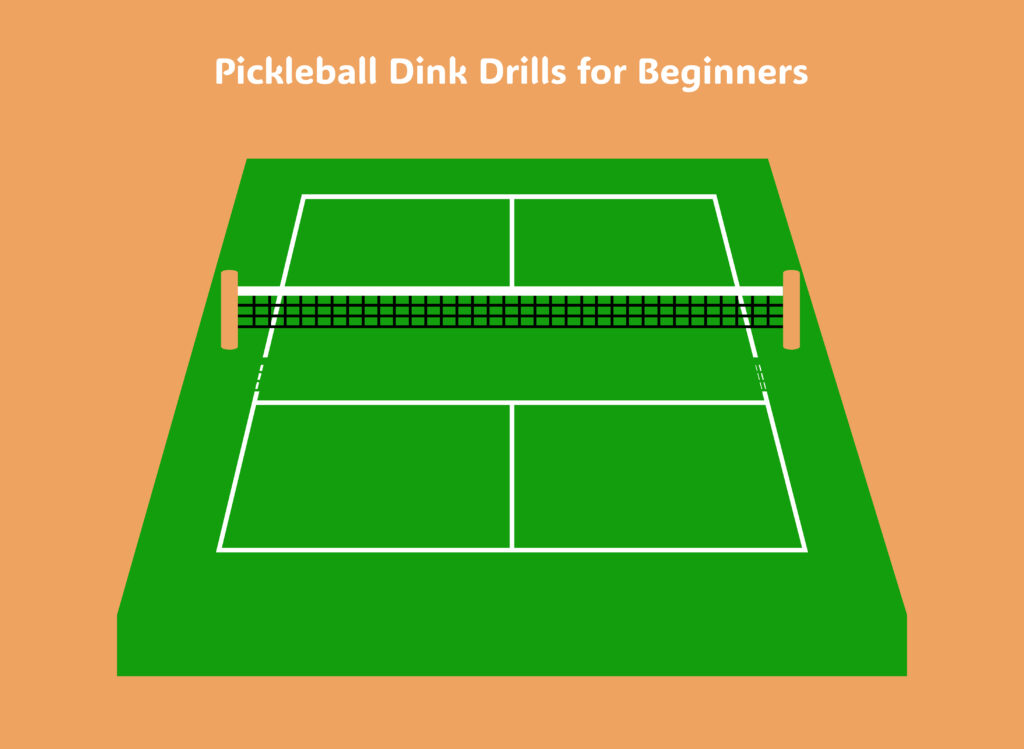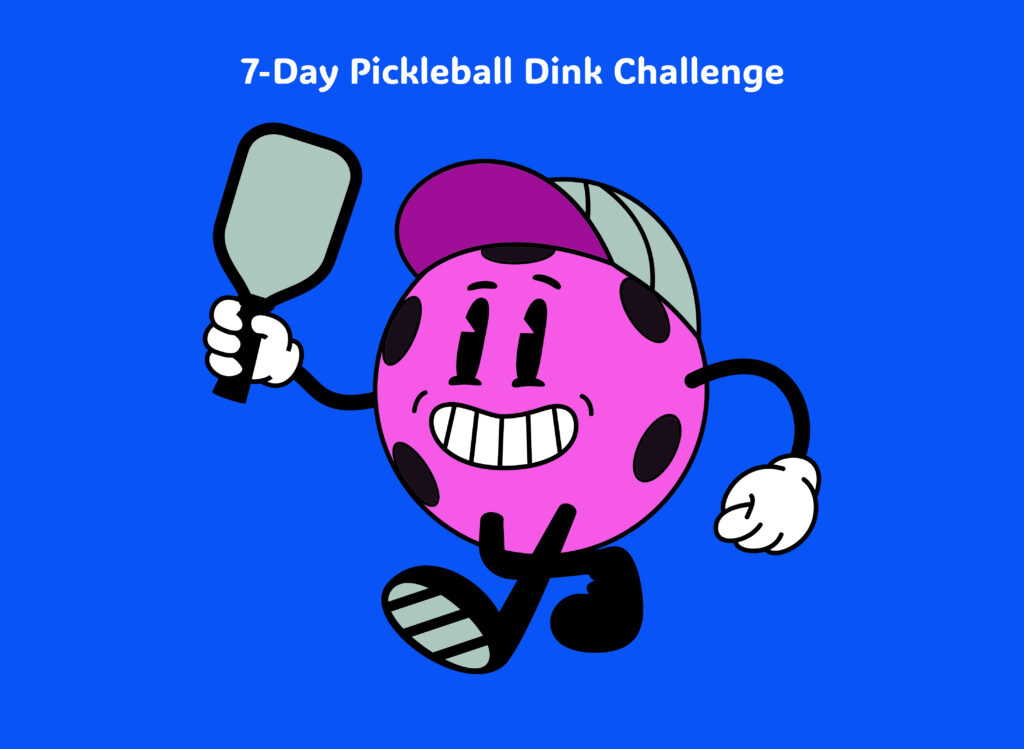Win a Dink-Out in Pickleball
To Win a dink-out in pickleball is about soft hands and patience, but even more important its also about pressure, precision, and knowing exactly when to switch gears. In doubles, especially across UK clubs and league matches, rallies often settle into long dink exchanges at the Kitchen line. It’s here that the true battle begins. Both teams are looking for that one mistake, one high ball, one moment of hesitation to pounce. But if you want to consistently win these dink-outs, you need a plan and a good paddle.
The dink-out isn’t passive. It’s not about pushing the ball back and forth until someone gets bored. It’s a tactical duel, full of micro-decisions: change of pace, angle, depth, and when to accelerate. Whether you’re a new player still learning to control the Kitchen or an experienced competitor in UK tournaments, understanding how to win the dink-out can completely shift the outcome of your game.
Beginners: Control and Consistency Over Flash
For UK beginners, the dink-out can feel intimidating—especially when you’re still working on soft touches. Many players lose patience, try to attack too soon, or simply pop the ball up. The key at this level isn’t to finish the point—it’s to outlast your opponent by staying controlled and consistent.
How beginners can win a dink-out:
✔ Focus on paddle angle—keep it slightly open to maintain soft contact.
✔ Use compact strokes—no wrist flicks or big swings.
✔ Keep your dinks low and slow—force your opponent to hit upward.
✔ Aim for their backhand side or outside foot.
✔ Don’t attack unless the ball is clearly above the net.
In UK club sessions, beginners who can simply keep the ball in play longer than their opponent often come out on top. Winning a dink-out at this level isn’t about outsmarting—it’s about being patient enough not to beat yourself.
🔥 Key takeaway: At the beginner level, the dink-out is won through consistency—less power, more control.
Intermediate: Creating Pressure and Forcing the Error
At intermediate level, the dink-out becomes a mental and tactical battle. Most players can keep a dink rally going—but not all can sustain quality, or make smart decisions under pressure. To win dink-outs at this stage, you need to add variation and intent, using dinks to pull your opponent out of position and set up your next move.
Intermediate dink-out strategies:
✔ Use angle dinks to stretch your opponent wide and open the middle.
✔ Mix in deeper dinks toward the back of the Kitchen to keep them guessing.
✔ Keep your body and paddle stable—don’t telegraph your intention.
✔ Look for signs of discomfort—reachy returns, late footwork, or shallow replies.
✔ Once you’ve pulled them wide, attack the middle with speed or a hard roll.
Many UK doubles players at this level rely too heavily on cross-court dinks. Instead, alternating between cross and straight, and occasionally rolling one down the line, forces your opponent to adjust constantly. That’s when the mistakes come—missed shots, pop-ups, or simply a lapse in focus.
🔥 Key takeaway: Intermediate dink-outs are won by applying pressure—not with power, but with smart placement and variation.
Advanced: Bait, Control, and Counterattack
At the advanced level, dink-outs become strategic minefields. Players know how to disguise shots, switch speeds, and read subtle cues in their opponent’s body language. Winning here isn’t about waiting for an error—it’s about creating the conditions for one. The best UK players don’t just dink to stay in—they dink with the purpose of setting a trap.
High-level tactics for winning dink battles:
✔ Use off-speed dinks to break your opponent’s rhythm—some short, some deep.
✔ Hide your paddle face until the last second to disguise direction or spin.
✔ Use mini roll dinks that land near the line and bounce away low.
✔ Bait your opponent with a few easy dinks, then change pace or direction.
✔ Stay alert—the moment they pop one up, counter quickly and cleanly.
In top-tier UK league matches or national-level tournaments, dink-outs are battles of discipline and deception. The team that maintains their pattern long enough to strike first usually wins. But it’s rarely brute force—it’s the art of knowing when to switch from soft to aggressive, and executing the transition with absolute control.
🔥 Key takeaway: At an advanced level, dink-outs are won through deception, precision, and perfectly timed attacks.
Training Dink-Outs the Right Way
Winning dink-outs isn’t about waiting—it’s about preparation. Like any other skill in pickleball, winning a dink rally requires specific, focused training. Most UK clubs now run regular dink drills, but you can also practise with a partner or solo using target zones.
Dink-out training ideas:
✔ Cross-court dink drill – keep the rally alive with 10+ quality dinks per rep.
✔ Deep/short variation drill – alternate between short dinks and deeper Kitchen shots.
✔ Foot target drill – place cones near the opponent’s feet and aim to land dinks there.
✔ Bounce control drill – practise landing dinks that bounce no higher than six inches.
✔ Attack transition drill – dink 5 times, then counter on a high ball with a flick or roll.
The more you repeat these patterns, the more natural they feel during real match play. With time, you’ll learn not just how to survive a dink-out—but how to win it consistently.
🔥 Key takeaway: Smart practice builds smart play—drill dink battles until you can control tempo, direction, and outcome under pressure.
Final Thoughts: Dink to Win, Not Just to Stay In
The dink-out isn’t a delay—it’s a tactical test of control and patience. From club courts in Yorkshire to indoor tournaments in London, pickleball in the UK is growing more competitive, and the soft game is taking centre stage. If you want to rise up the ranks, you can’t just survive the dink-out—you have to learn how to own it.
Key Takeaways:
✔ Beginners should focus on consistency and controlled paddle technique.
✔ Intermediate players must add depth, angles, and purposeful variation.
✔ Advanced players win dink-outs by disrupting rhythm, disguising shots, and seizing the first mistake.
✔ Training specific dink patterns will sharpen your reactions and decision-making.
✔ Dink-outs aren’t passive—they’re battles of focus and finesse.



